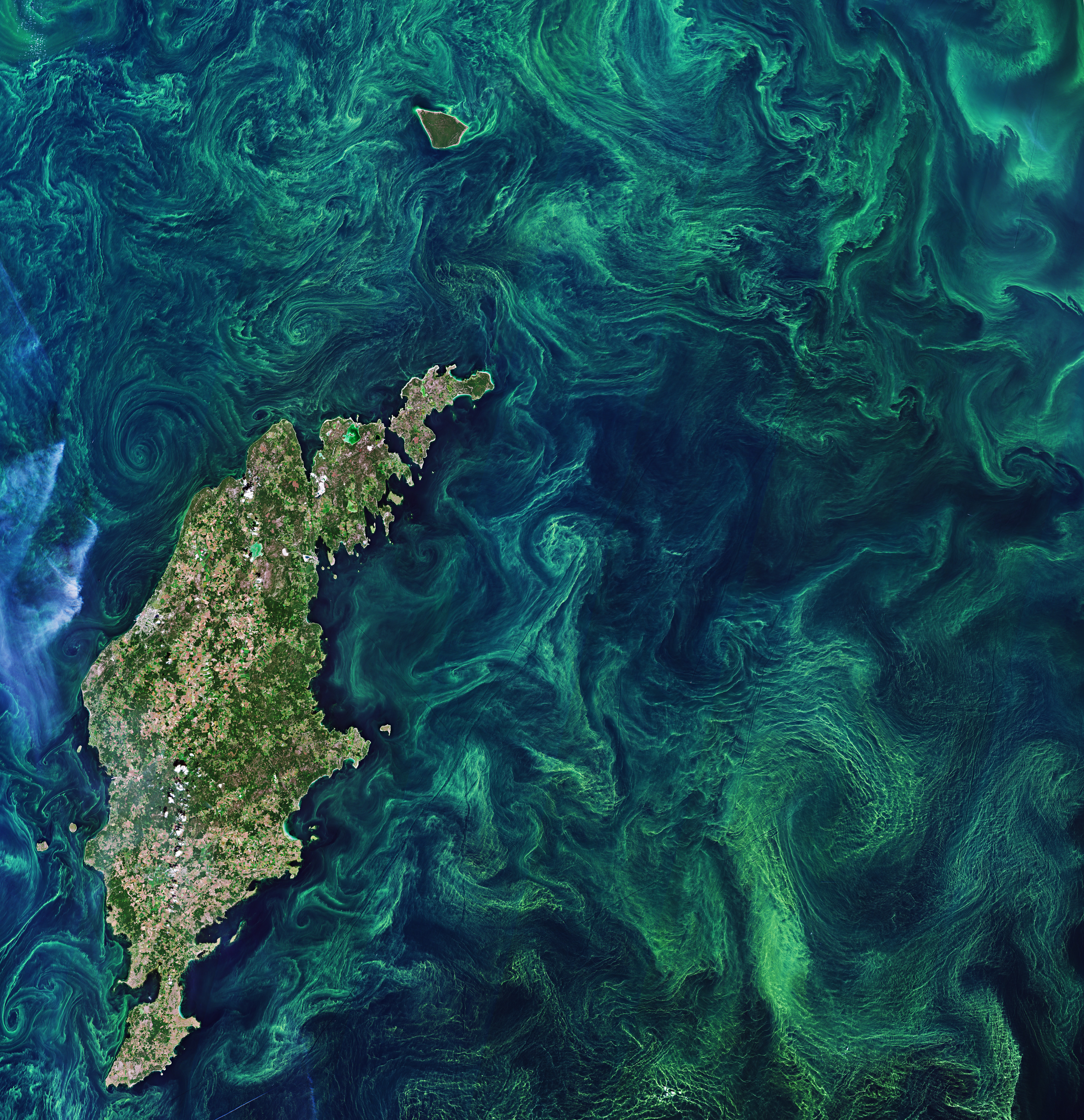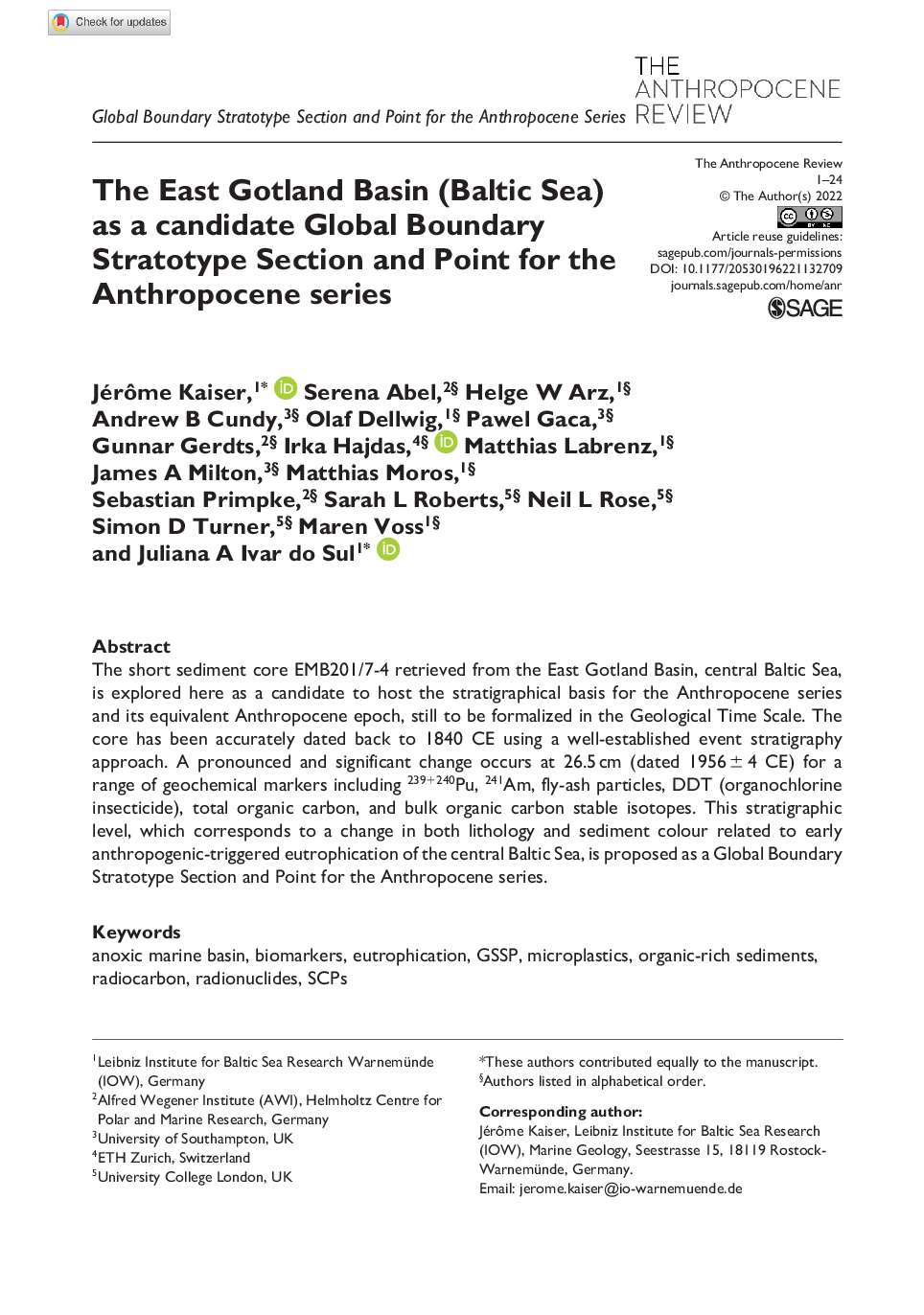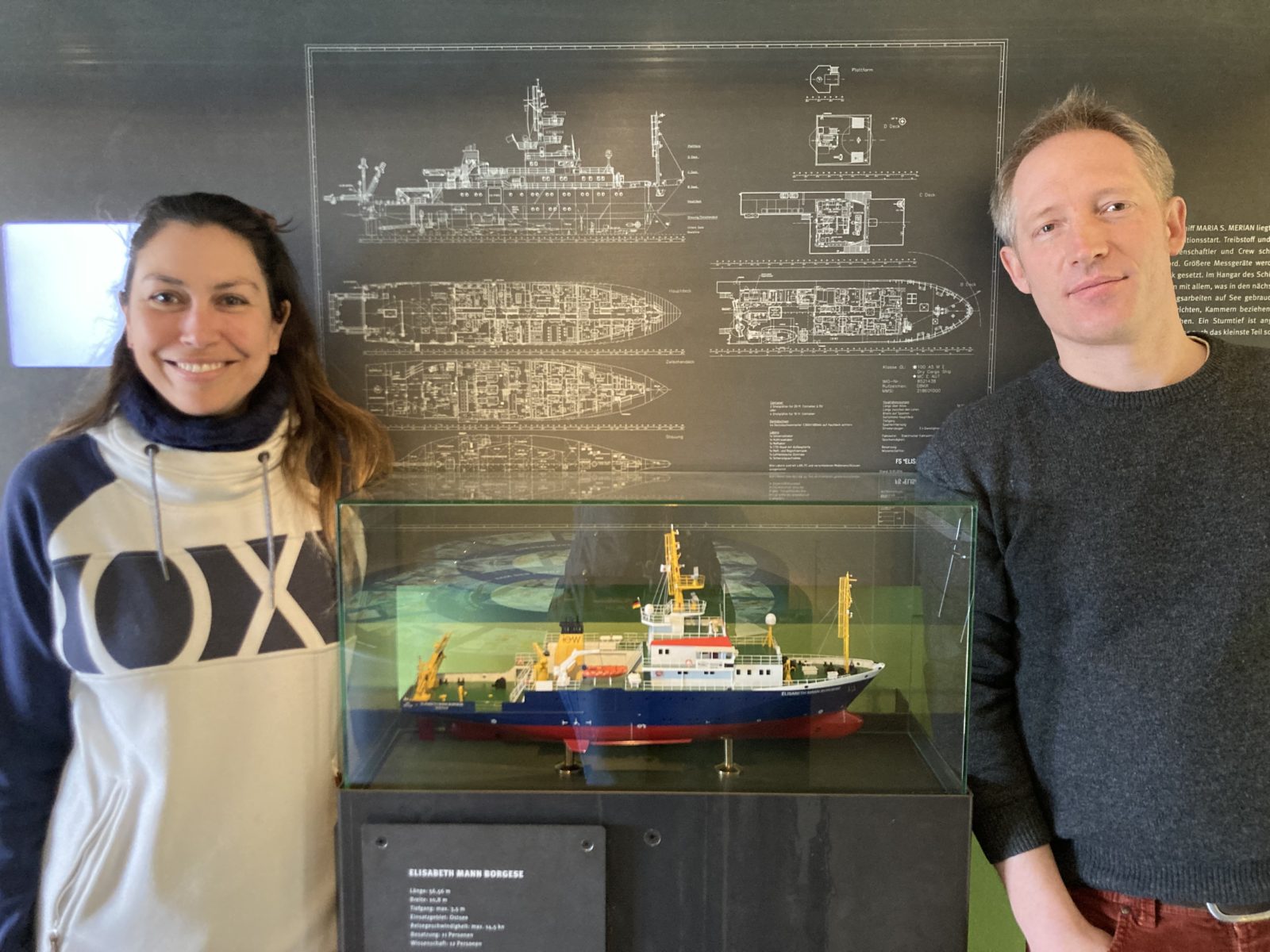East Gotland Basin, Baltic Sea

Site Introduction
The Baltic Sea is a landlocked arm of the Atlantic Ocean, enclosed between Scandinavia and the rest of Europe. The basin that today’s shallow, brackish1 sea occupies was formed by the retreat of the Fennoscandian ice sheet (between 9,000 and 13,500 years ago). The surrounding land has been inhabited ever since, with around 85 million people living there today. The region has a long and rich human history: people have used the area for fishing and trade routes that have facilitated centuries of social and cultural exchange, while political and economic forces have shifted surrounding national boundaries. All this human activity has also had significant impact on the sea’s ecology. High levels of nutrient runoff from the surrounding land have resulted in the Baltic being one of the most eutrophic2 seas on the planet, with adverse effects on marine ecosystems. In response to the damaging effect of human activity on the sea, the Baltic Marine Environment Protection Commission (HELCOM) was founded in 1974 and since then has made recommendations for sustainable maritime activities—although the health of the sea has continued to decline.
Traces of the region’s cultural, environmental, and climate history are well-preserved in the seafloor sediments—some of which lay at depths of 249 meters (in the Gotland Deep) or 459 meters (in the Landsort Deep), although the average depth of the Baltic is just 54 meters. Scientific research on this body of water began in the 1800s, making the Baltic one of the most well-studied seas in the world. Since then, scientists have investigated many aspects of its geology and ecology, including the formation of the basin, the stratigraphic record, coastal processes, sediment dynamics, and the interaction between anthropogenic and natural processes. The Leibniz Institute for Baltic Sea Research in Warnemünde, Germany, is dedicated to the study of the geology, chemistry, biological oceanography, and physical oceanography of the sea.
Location of the Core
The core was extracted from the seafloor of the Eastern Gotland Basin, in the central region of the Baltic Sea, at a depth of 241 meters. At this depth, it is pitch black, very cold (around 5 ºC), and the water pressure is around twenty-five times that at the surface. The seabed is a silt plain, surrounded by mud-covered rocky hills, and the water is not moved by wave energy or current activity from the surface. The deep water of the Baltic (below the halocline3 at 60–80 meters) is very low in oxygen, making it inhospitable to most aquatic life forms. This means that the fine silt and clay of the seafloor remains largely undisturbed, preserving the organic and chemical markers deposited in the sediments. Rocks formed in similar basins throughout the geological record have been hugely influential in our understanding of planetary evolution.
Dense, well-oxygenated seawater flows from the North Sea into the Baltic depths when meteorological conditions are right. These Major Baltic Inflows (MBIs) happen at irregular intervals and have been monitored by scientists since 1880. Because these salty, oxygen-rich inflows leave increased levels of manganese carbonate in anoxic sediments, they can be used to validate age models of specific locations in the Baltic Sea.
The Core and Results
The forty-five-centimeter-long core records a story from around 1840 to 2018, with a remarkably stark change in the sediments visible at a depth of twenty-seven centimeters: the light beige and gray lower colors are suddenly replaced with much darker matter, which indicates a rapid change in conditions during the deposition of the mud. This transition corresponds to an increase in organic carbon, reflecting the deoxygenation of deep waters in the Baltic Sea in the 1950s—a consequence of algal growth at the surface and oxygen-consuming bacterial activity at depth, which were in turn caused by the new use of industrial nitrate and phosphate fertilizers in the postwar period. Analyses reveal that this change is paralleled by increases in geochemical and radionuclide4 markers that record the mid-twentieth-century acceleration of industrial processes, fossil fuel combustion, and pollution in the Baltic Sea and its catchment.5
The light-colored lower section of the core records from around 1840 to 1950, and these layers were laid down at a rate of 0.2 centimeters per year. From 1950, the layers roughly double in thickness to 0.4 centimeters per year. The clear, horizontal layers tell us that the sediments were not disturbed after deposition. The research team used event stratigraphy6 to define various time markers: the date of core sampling (2018); eight MBIs (various dates between 1964 and 2014, listed above); increased caesium-137 from the Chernobyl nuclear power plant accident (1986); the appearance of DDT7 pesticides (1950); the onset of coal combustion (1865); and the extrapolated age of the bottom of the core (1840). These markers could then be used to date the traces that appear at other positions in the core. Around 1956 (the stark color change at twenty-seven centimeters) there is a sharp increase in various anthropogenic markers, including lead and other metals, organic carbon, biomarkers (diatomsterol, tetrahymanol, and coprostanol, which indicate the presence of diatoms, a redoxcline,8 and human fecal matter, respectively), DDT derivatives, radionuclide fallout signals, microplastics, and spheroidal carbonaceous particles (SCPs)9—some of which peak in the 1970s and ’80s. The microparticles of plastics include a range of polymer types (mostly thermoplastics) that reflect the widespread and various use of plastics since the mid twentieth century.
Collection and Analysis
A forty-five-centimeter-long sediment core (EMB201/7-4) was retrieved at a water depth of 241 meters from the Eastern Gotland Basin in December 2018. It was extracted using a multicorer that is lowered to the seafloor by a shipboard winch. When it reaches the seafloor, multiple sixty-centimeter-long PVC tubes are pushed into the soft sediment and the top and bottom of each tube is sealed. The water-sediment interface and approximately the first fifty centimeters of the sediments are extracted intact within the tube.
The core was subjected to various analyses, including analysis of chemical composition, radionuclides, mercury, total nitrogen, total organic carbon, nitrogen and carbon stable isotopes, polycyclic aromatic hydrocarbons (PAHs),10 DDT derivatives, trace metals, microplastics, radiocarbon, SCPs, and plutonium stable isotopes.
Desulfurization of the total lipid extracts of the sediments. Photograph by Nadine Hollmann © All Rights Reserved Press to pack the samples in tin foil into pellets for the elemental analyzer. Photograph by Iris Liskow © All Rights Reserved
The Research Team
The Leibniz Institute for Baltic Sea Research (IOW), Germany, leads the Baltic Sea candidature in the context of the Anthropocene GSSP project. The research team is headed by Jérôme Kaiser, an experienced Baltic Sea sedimentologist and organic geochemist, and Juliana Ivar do Sul, a member of the Anthropocene Working Group (AWG) and an experienced microplastics researcher. The team is composed of thirteen scientists with various expertise. Helge Arz, Olaf Dellwig, Matthias Moros, and Jérôme Kaiser work in the Marine Geology department of the IOW, where a main focus of their work involves optimizing sediment chronology and proxy application for accurate paleoenvironmental and paleoclimatic reconstructions. Matthias Labrenz, a microbiologist involved in plastic research, and Maren Voß, specialized in biogeochemical cycling of nitrogen compounds, are from the Marine Biology department, where Juliana originally started her research at the IOW. Colleagues Serena Abel, Sebastian Primpke, and Gunnar Gerdts from the Alfred Wegener Institute in Helgoland, Germany analyzed the polymeric nature of microplastics. Irka Hajdas, Neil Rose, and Andrew Cundy are members of the AWG and contributed to the study with radiocarbon, fly ash, and plutonium isotope analyses, respectively.
Juliana Ivar do Sul and Jerome Kaiser (PIs of the East Gotland Basin team) with a model of the Elisabeth Mann Borgese, the research vessel used to collect the GSSP-candidate core. Photograph by Jerome Kaiser © All Rights Reserved
Principal investigators (listed alphabetically):
Jérôme Kaiser, Leibniz Institute for Baltic Sea Research
Juliana A. Ivar do Sul, Leibniz Institute for Baltic Sea Research
Contributing Scientists/Researchers (listed alphabetically):
Serena Abel, Alfred Wegener Institute, Microplastic analysis
Helge W. Arz, Leibniz Institute for Baltic Sea Research, XRF analysis
Andy Cundy, University of Southampton, Pu isotope analysis
Olaf Dellwig, Leibniz Institute for Baltic Sea Research, Metal analysis
Gunnar Gerdts, Alfred Wegener Institute, Microplastic analysis
Irka Hajdas, ETH Zurich, Radiocarbon analysis
Nadine Hollmann, Leibniz Institute for Baltic Sea Research, Biomarker analysis
Anne Köhler, Leibniz Institute for Baltic Sea Research, Metal analysis
Matthias Labrenz, Leibniz Institute for Baltic Sea Research, Microplastic analysis
Iris Liskow, Leibniz Institute for Baltic Sea Research, Nitrogen and Carbon analysis
Matthias Moros, Leibniz Institute for Baltic Sea Research, Radionuclide analysis
Sebastian Primpke, Alfred Wegener Institute, Microplastic analysis
Sarah Roberts, University College London, SCP analysis
Neil Rose, University College London, SCP analysis
Ines Scherff, Leibniz Institute for Baltic Sea Research, Metal (Hg) analysis
Maren Voß, Leibniz Institute for Baltic Sea Research, Nitrogen and Carbon analysis


This article is distributed under the terms of the Creative Commons Attribution-NonCommercial 4.0 License (https://creativecommons.org/licenses/by-nc/4.0/) which permits non-commercial use, reproduction and distribution of the work without further permission provided the original work is attributed as specified on the SAGE and Open Access page (https://us.sagepub.com/en-us/nam/open-access-at-sage).
- Leibniz Institute for Baltic Sea Research Warnemünde (IOW) website
Bancone, Chiara E. P, Simon D. Turner, Juliana A. Ivar do Sul, and Neil L. Rose. 2020. “The Paleoecology of Microplastic Contamination.” Frontiers in Environmental Science 8. https://doi.org/10.31119/fenvs.2020.574008.
Ivar do Sul Juliana A., and M. Labrenz. 2022. “Microplastics into the Anthropocene.” In Rocha-Santos, Teresa, Monica F Costa, and Catherine Mouneyrac (eds). Handbook of Microplastics in the Environment. Cham: Springer International Publishing AG. https://doi.org/10.1007/978-3-030-39041-9.
Kaiser, Jérôme, and Mathias Lerch. 2022. “Sedimentary Faecal Lipids as Indicators of Baltic Sea Sewage Pollution and Population Growth Since 1860 AD.” Environmental Research 204: 112305–112305. https://doi.org/10.1016/j.envres.2021.112305.
Kaiser, Jérôme, Norbert Wasmund, Mati Kahru, Anna K Wittenborn, Regina Hansen, Katharina Häusler, Matthias Moros, Detlef Schulz-Bull, and Helge W Arz. 2020. “Reconstructing N2-Fixing Cyanobacterial Blooms in the Baltic Sea Beyond Observations Using 6- and 7-Methylheptadecane in Sediments as Specific Biomarkers.” Biogeosciences 17 (9): 2579–91. https://doi.org/10.5194/bg-17-2579-2020.
Moros, Matthias, Thorbjørn J Andersen, Detlef Schulz-Bull, Katharina Häusler, Dennis Bunke, Ian Snowball, Aarno Kotilainen, et al. 2017. “Towards an Event Stratigraphy for Baltic Sea Sediments Deposited Since AD 1900: Approaches and Challenges.” Boreas 46 (1): 129–42. https://doi.org/10.1111/bor.12193.









